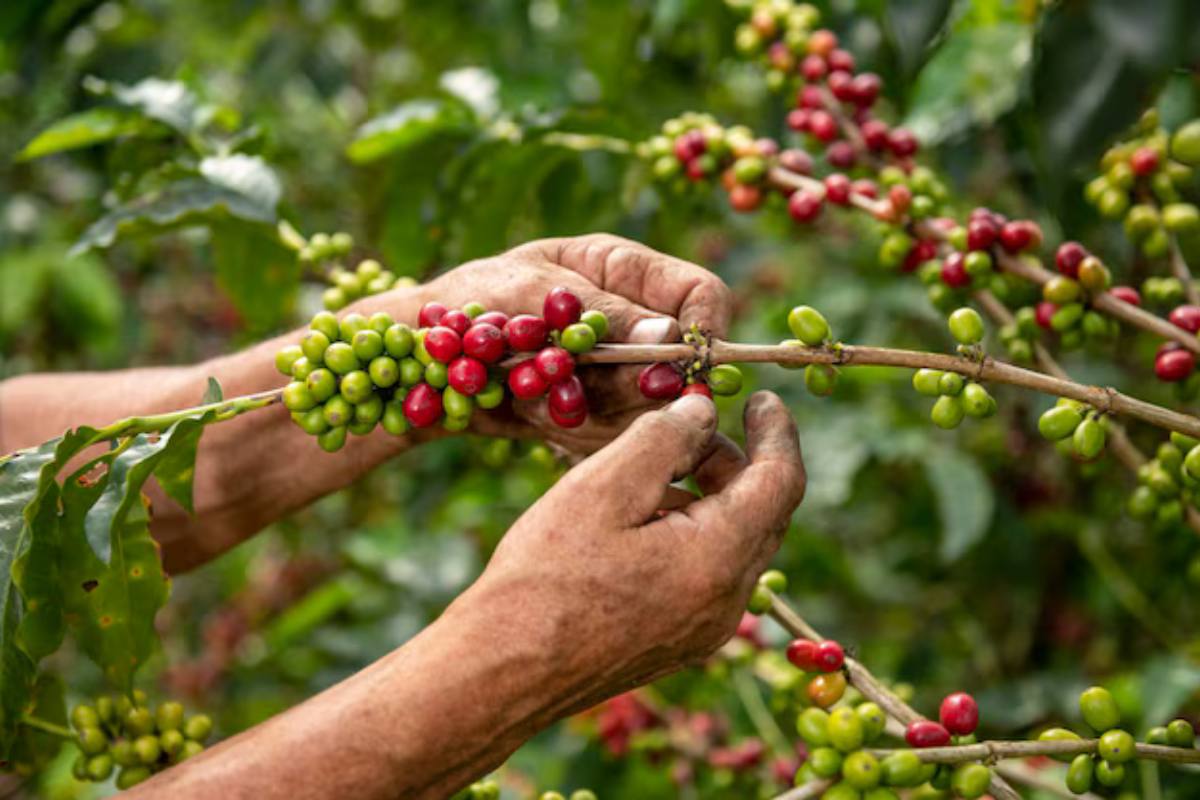If you enjoy starting your day with a warm, aromatic cup of coffee, you might not often think about the incredible journey those coffee beans have taken to reach your mug. How coffee is harvested is a crucial part of that journey, directly influencing the flavor, quality, and experience of your brew.
In this guide, you’ll learn everything about the coffee harvesting process — from the tree to the cup — and why this stage plays a vital role in producing the coffee you love.
Understanding the Coffee Plant
Coffee begins as a cherry growing on a tree. These trees flourish in tropical climates within the coffee belt, located between the Tropic of Cancer and the Tropic of Capricorn. Inside each ripe cherry are two coffee beans — the seeds that, once roasted, become the coffee we drink.
The journey from tree to cup starts with coffee harvesting, which is more complex and labor-intensive than most people realize.
When is Coffee Harvested?
The coffee harvest season depends on the country’s climate and altitude:
- Central and South America: Typically from April to September.
- Africa: From October to April.
- Asia (Vietnam, Indonesia): From May to October.
Farmers wait until the cherries are perfectly ripe, which directly affects the sweetness, acidity, and flavor profile of the coffee.
Coffee Harvesting Methods
1. Hand-Picking (Selective Picking)
This is the most labor-intensive but highest-quality method.
- How it works: Workers carefully pick only the ripe, red cherries by hand, leaving unripe ones for future picking.
- Where it’s common: Specialty coffee farms in countries like Ethiopia, Colombia, and Kenya.
Benefits:
- Ensures optimal flavor.
- Reduces defective beans.
- Increases quality for specialty markets.
Downside:
- Expensive and time-consuming.
2. Strip Picking (By Hand or Machine)
This method involves stripping all cherries — ripe and unripe — from the branch in one pass.
- Manual strip picking: Done by pulling the cherries off the branch by hand.
- Mechanical strip picking: Uses machines that shake the tree to drop the cherries.
Common in: Large-scale farms in Brazil and Vietnam.
Pros:
- Faster and cheaper.
- Suitable for commercial-grade coffee.
Cons:
- Lower quality because it mixes ripe and unripe cherries.
Post-Harvest: What Happens Next?
After harvesting, the cherries must be processed quickly to prevent spoilage. The method chosen influences the coffee’s flavor profile.
Common Processing Methods:
- Washed (Wet) Process:
- Removes the cherry pulp with water.
- Produces clean, bright flavors.
- Natural (Dry) Process:
- Cherries are dried whole under the sun.
- Results in fruity, full-bodied coffee.
- Honey Process:
- Removes the skin but leaves some pulp.
- Creates a balance between clean and fruity notes.
Drying the Beans
Once processed, beans are dried until they reach about 10–12% moisture content. This can be done:
- On raised beds (better airflow).
- On patios (sun-drying).
- Using mechanical dryers (in humid climates).
Proper drying is critical. Under-dried beans can mold; over-dried beans become brittle.
Milling and Hulling
After drying, beans go through:
- Hulling: Removes the parchment layer (for washed coffee) or dried husk (for natural coffee).
- Polishing (optional): For appearance.
- Grading and sorting: By size, weight, and defects.
Exporting: The Green Coffee Stage
The beans, now called green coffee, are packed into jute or sisal bags and shipped worldwide to roasters. At this stage, beans are stable for months without losing flavor.
Roasting: Where the Magic Happens
Roasting transforms green beans into the aromatic, brown coffee you know. Roasters develop flavor profiles based on:
- Roast level (light, medium, dark).
- Origin characteristics.
- Customer preferences.
From Roaster to Cup
Once roasted, beans are ground and brewed — whether through espresso, pour-over, French press, or your favorite method. Every step before brewing — especially harvesting — shapes the final taste.
Why Coffee Harvesting Matters to You
The way coffee is harvested doesn’t just affect farmers — it directly impacts what ends up in your cup. Hand-picked beans from specialty farms produce brighter, more complex flavors. Machine-harvested beans often go into commercial blends, instant coffee, or lower-cost products.
By understanding how coffee is harvested, you can make more informed choices:
- Look for “hand-picked” or “single-origin” labels if flavor matters most to you.
- Support ethical and sustainable farms that prioritize quality.
Ready to Explore More?
Next time you sip your coffee, remember the hands that picked those cherries and the journey they took. Want to dive deeper into how climate, processing, and roasting affect your brew? Check out our next articles — your coffee knowledge journey is just beginning!
